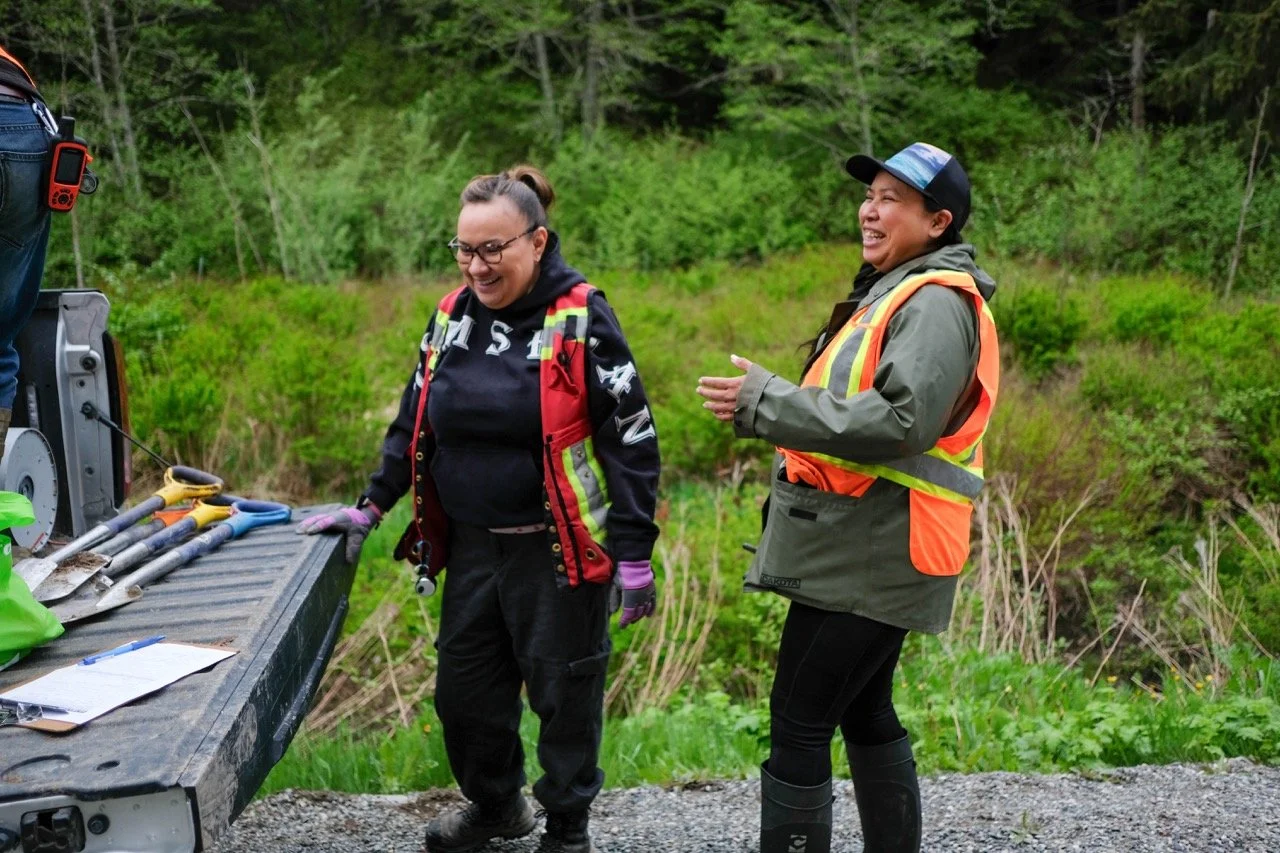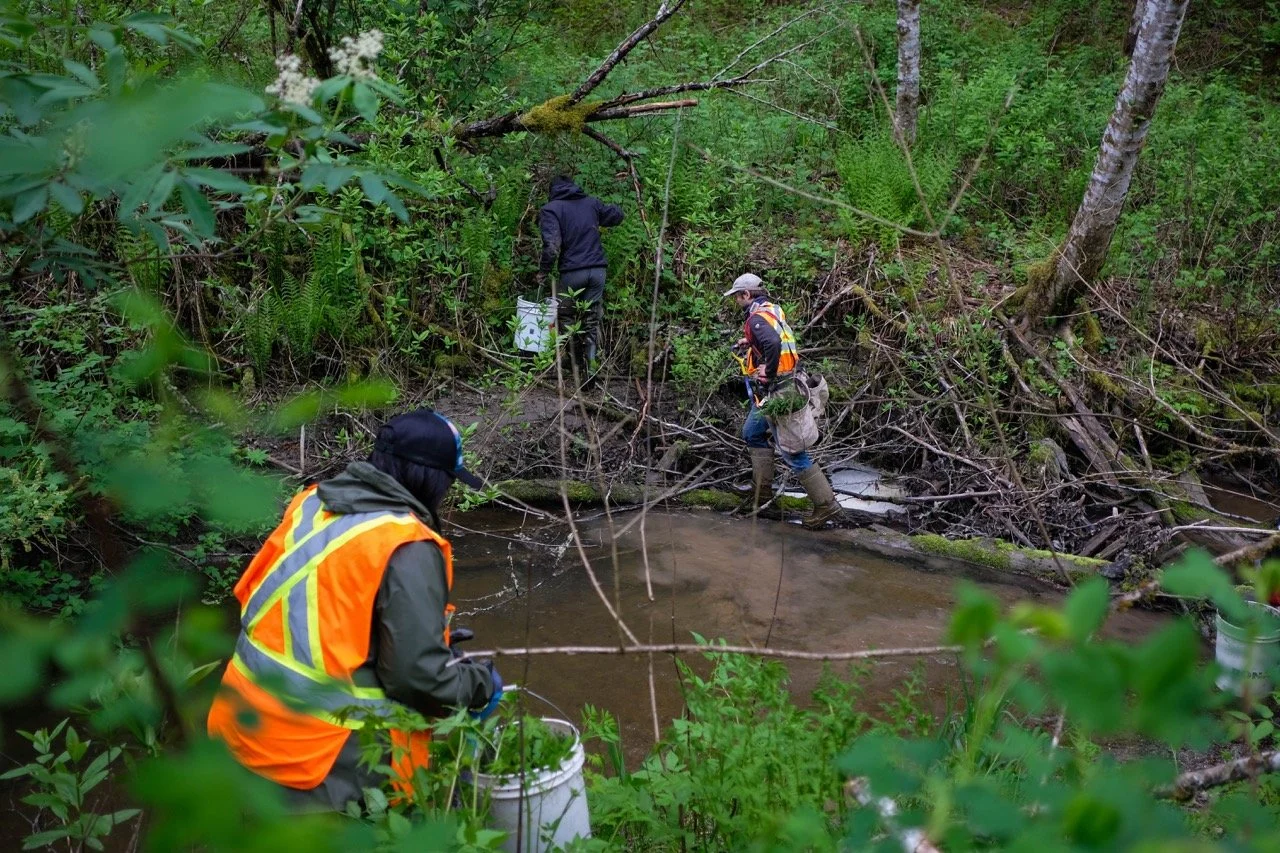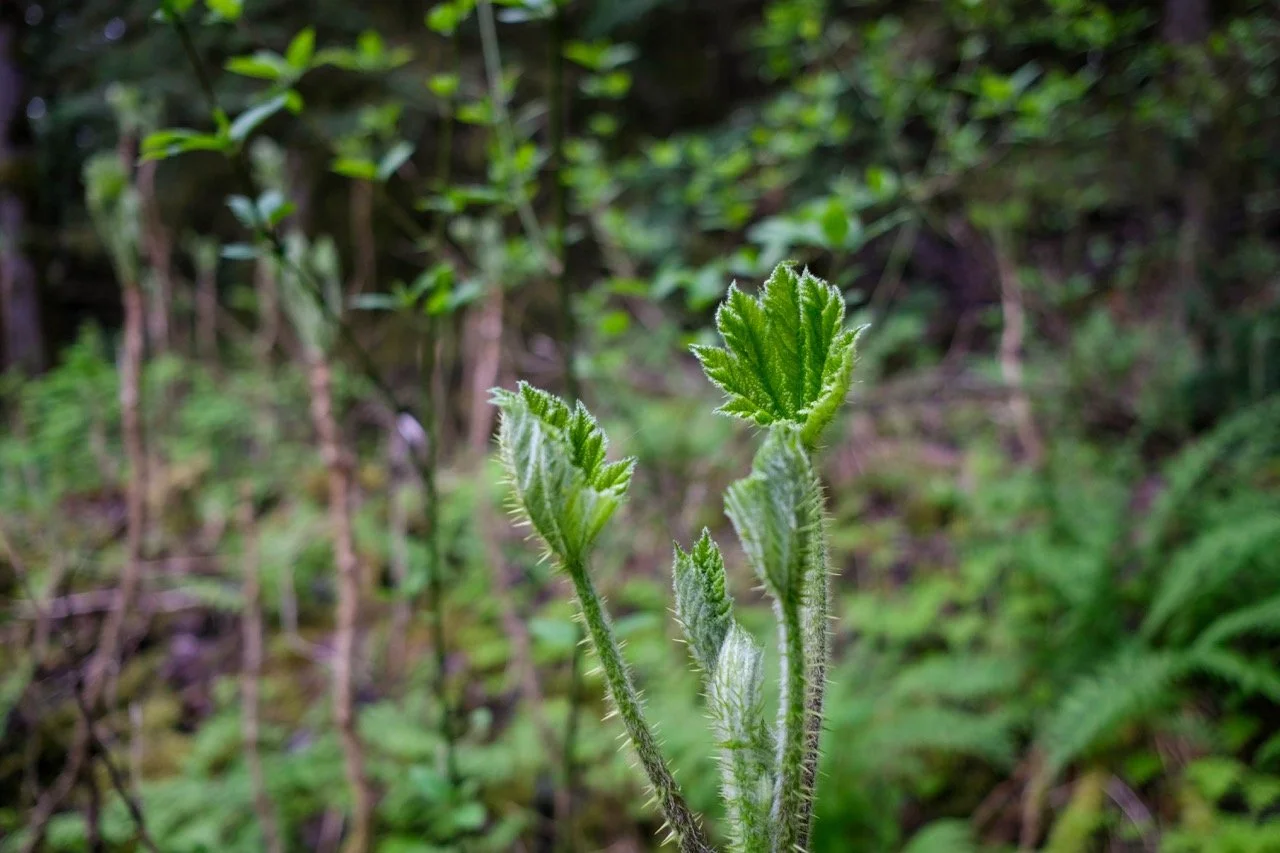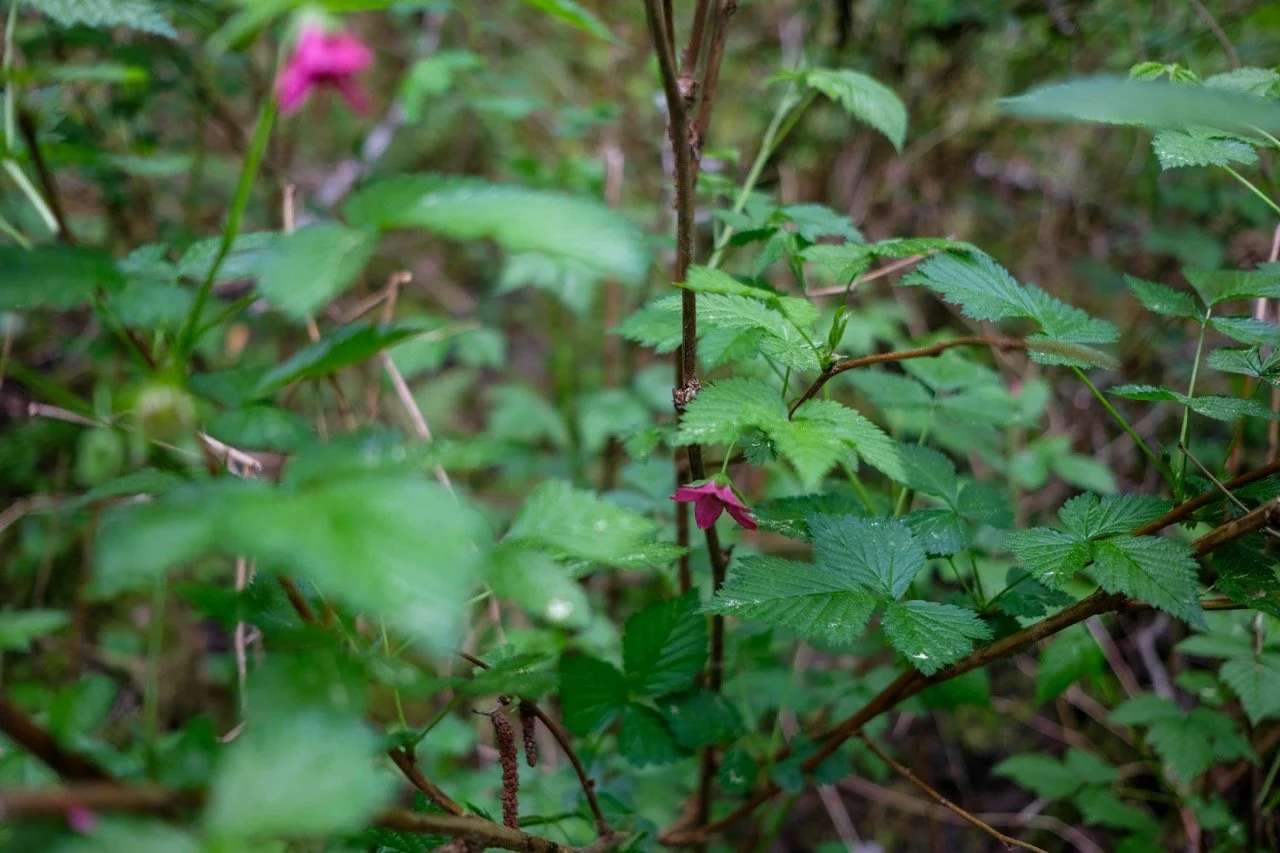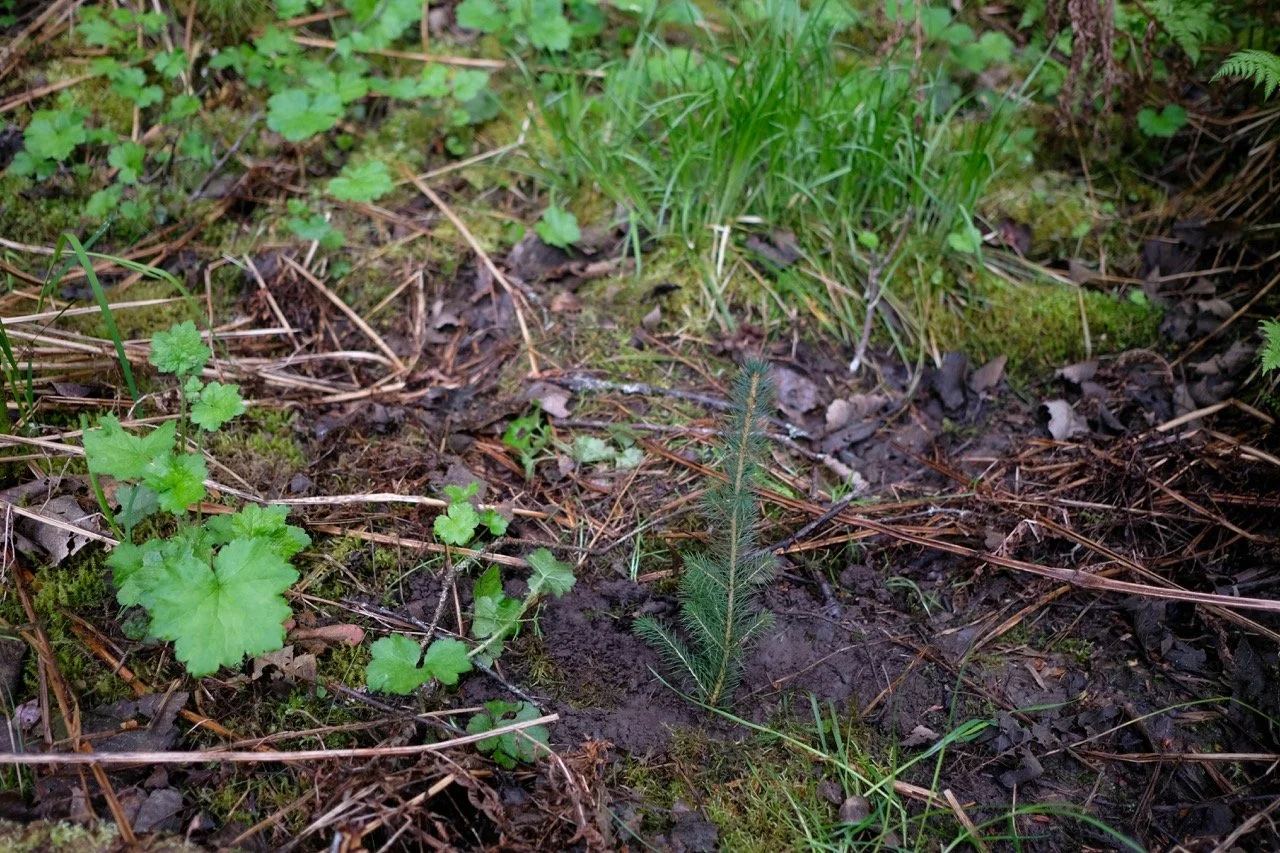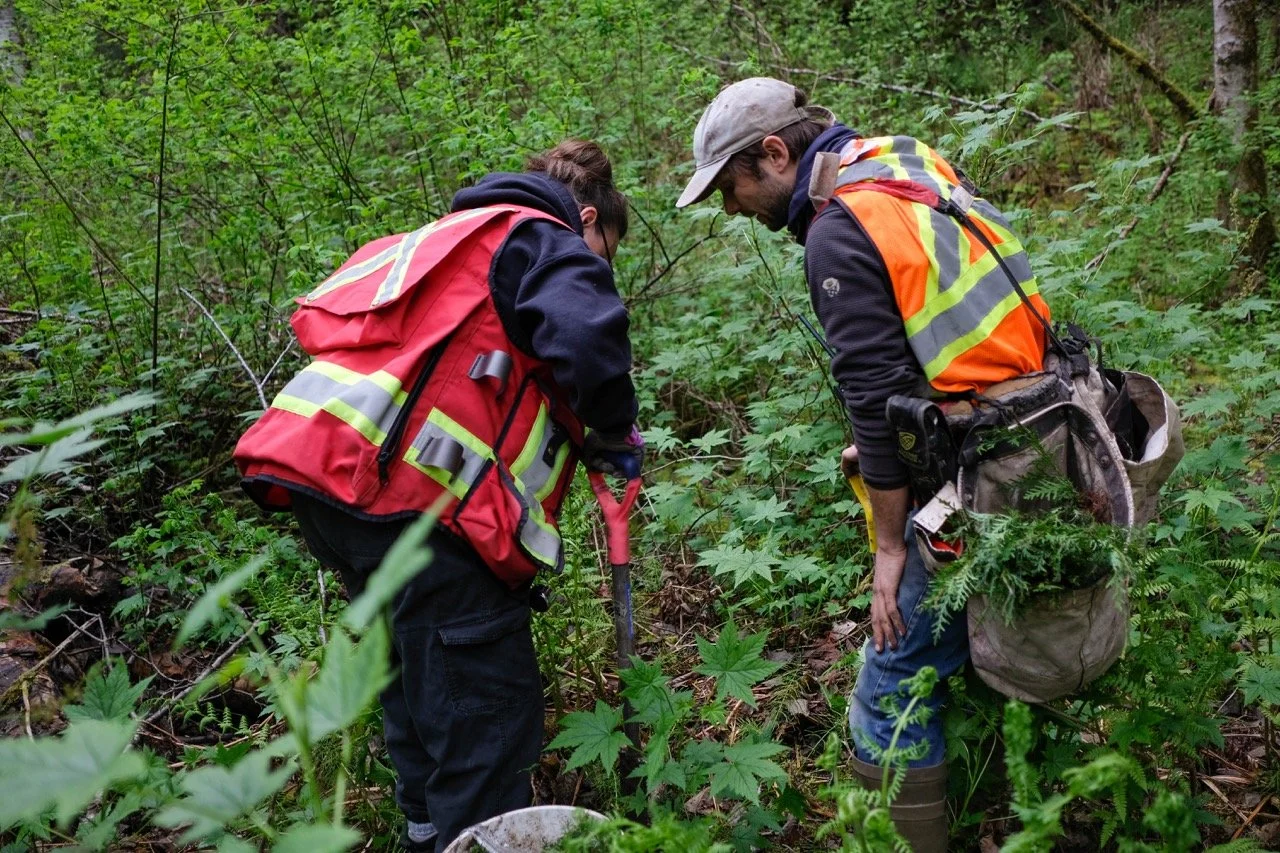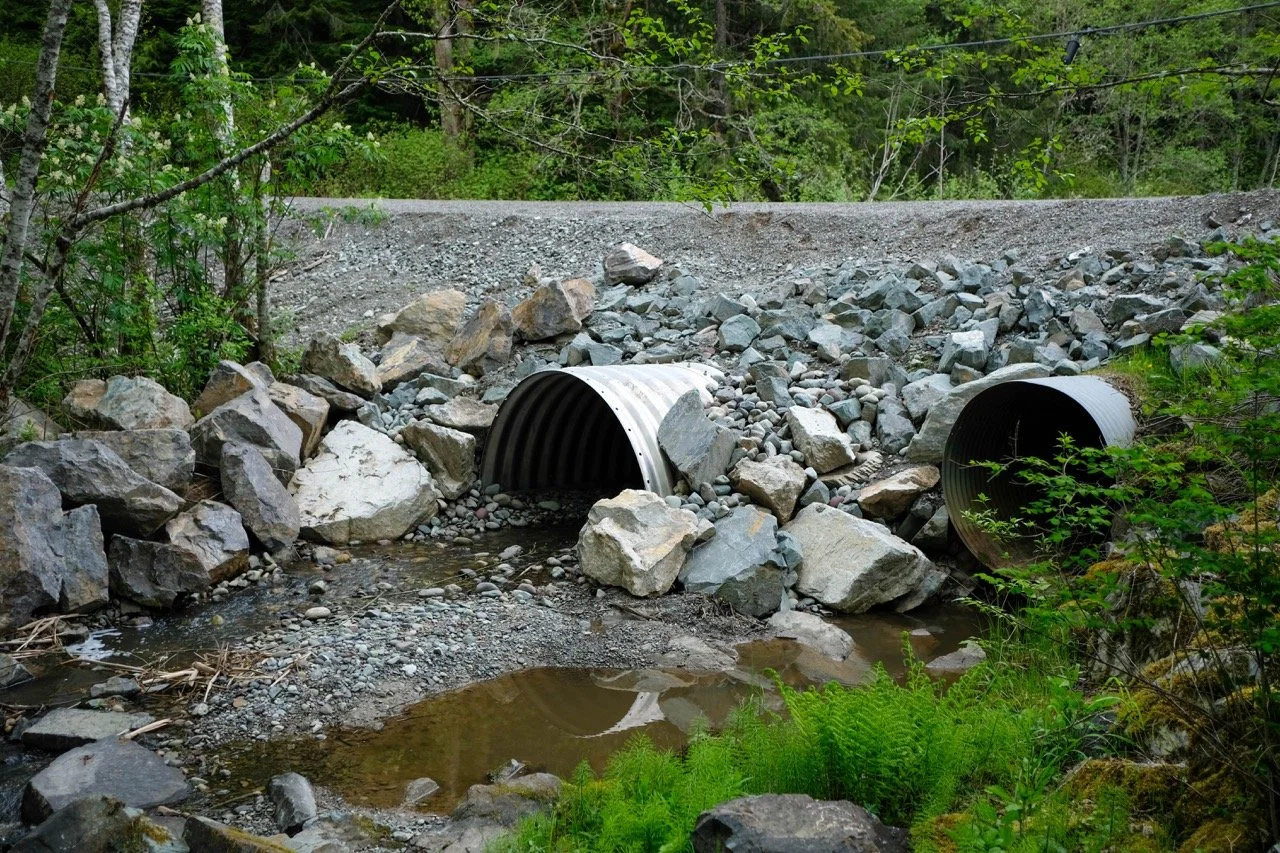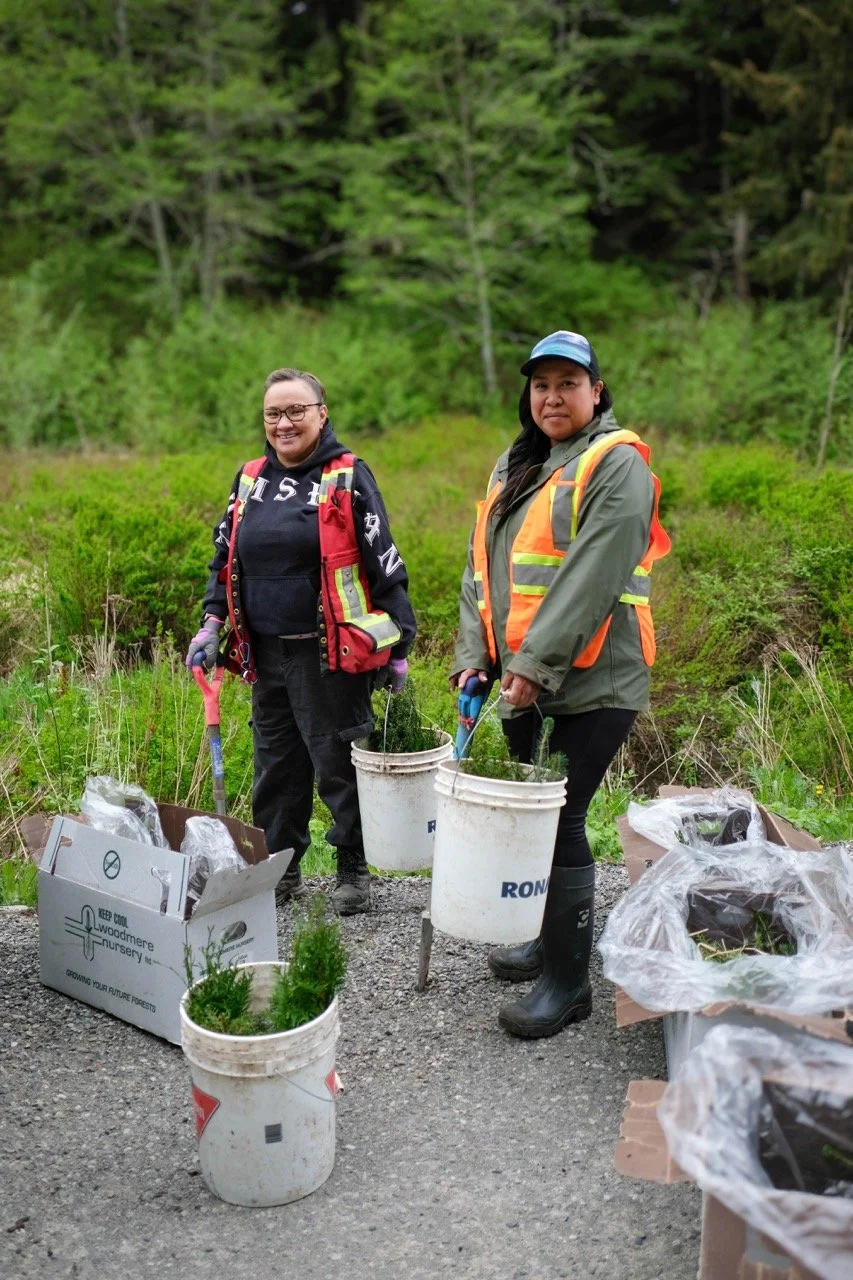Riparian Tree Planting with Kitsumkalum
Tammy and Mandi getting ready to tree plant
The Kitsumkalum team crossing Kiyawmks creek
Nestled within Kitsumkalum Laxgibuu (Wolf) Clan territory, Kiyawmks Spring and Willow Creek offer a sanctuary of lush green. The riparian corridors here on Ts’mysyen homelands are alive with waterfalls, towering conifers, ferns, moss, and dappled sunlight filtering through the trees. Back in May, the Indigenous Watersheds Initiative (IWI) team spent a morning in this vibrant landscape, witnessing firsthand the ongoing restoration efforts led by Kitsumkalum First Nation.
Following IWI's Regional Watershed Gathering in the Skeena River Valley, the Kitsumkalum team graciously invited the IWI team to join them for a morning of tree planting, providing a glimpse into their stewardship efforts in and around the city of Terrace. Led by Mandi, Kitsumkalum Fish and Wildlife Technician, and Tammy, Program Administrator, we gathered at their office and convoyed to the creek in our trucks. We arrived with an excess of sandwiches and the wrong footwear for planting, then filled our buckets with Sitka Spruce, Hemlock, Fir, and Cedar saplings—native species crucial for riparian restoration—and each grabbed a speed spade. Crossing a stream, with varying success in staying dry while walking over the log, we pushed past Devil’s Club, blooming Salmonberry bushes, young nettle plants, and sword ferns. After a brief planting demonstration from Loïc, a Biologist in Training with Westland Resources, the group dispersed to begin planting.
Devil’s Club Root
Delicate Magenta Salmon Berry Blooms
Conifer Sapling in the Ground
The Kitsumkalum First Nations Fish and Wildlife team, in partnership with Westland Resources, is actively working to plant approximately 30,000 trees, with 15,000 trees already planted along the creek-sides of Willow and Spring Creek. This initiative is part of a broader effort to restore conifer-dominant riparian areas, which provide shade to maintain cooler water temperatures, essential for ecosystem health and salmon populations in the region. Their 'Kiyawmks Spring Creek Salmon Habitat Restoration Project' aims not only to restore ecological balance but also to strengthen community ties through hands-on involvement and engagement, fostering a sense of shared responsibility and connection.
Tree Planting Demonstration from Loïc and Tammy
Restoration Work Happening in Close Proximity to Road Culverts
Kiyawmks Creek and Willow Creek occupy a space where natural forces converge with a modern urbanized landscape. These waterways have historically provided important habitat for salmon species, Dolly Varden, and Cutthroat trout. However, urbanization, agriculture, and forestry have introduced invasive species, increased sedimentation, and altered stream dynamics, challenging the health of these ecosystems. Kitsumkalum’s restoration project addresses these issues through community outreach, stream assessments, mapping, and collaboration with forestry experts. These efforts are vital for reversing ecological harm, enhancing ecosystem resilience, and restoring the integrity of the land and water. The project's proximity to private property and roads underscores the importance of integrating environmental stewardship with community involvement.
Mandi and Tammy ready to plant
As we worked the soil and planted trees, Mandi and Tammy underscored the importance of community involvement in their project. Beyond engaging the local community—which was essential, as they had to traverse private property (with consent) to access the creek—they are also committed to inspiring youth to work in environmental restoration. Tammy's son demonstrated this commitment by joining us on the riverbanks to help plant trees. Mandi and Tammy both emphasized the unique positionality they have as women, particularly as mothers, in this work, illustrating to their children and the broader community that this intergenerational and inclusive effort is empowering and essential for our shared future.
Later that day, the Kitsumkalum Fish and Wildlife team hosted 15 volunteers from Coast Mountain College, who were contributing to the tree-planting efforts further upstream—collaborative work that everyone could take pride in. In previous months, they had also welcomed high school outdoor education classes, highlighting the community engagement and educational opportunities this restoration project offers. These efforts go beyond planting trees; they represent a shared commitment to environmental and community health.
Water reminds us that change is an active process, driven by collective efforts—an accumulation of individual voices and actions flowing together. Through the persistent work of Kitsumkalum First Nation, they are shaping a stronger, more resilient future for both people and the land. Planting trees is more than just a restoration project—it’s a living demonstration of how community and nature can thrive together.

